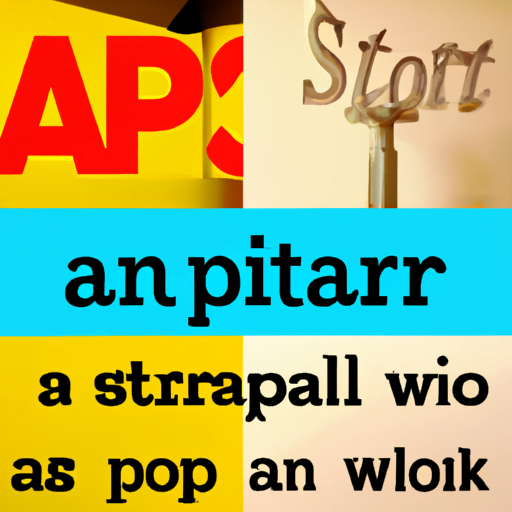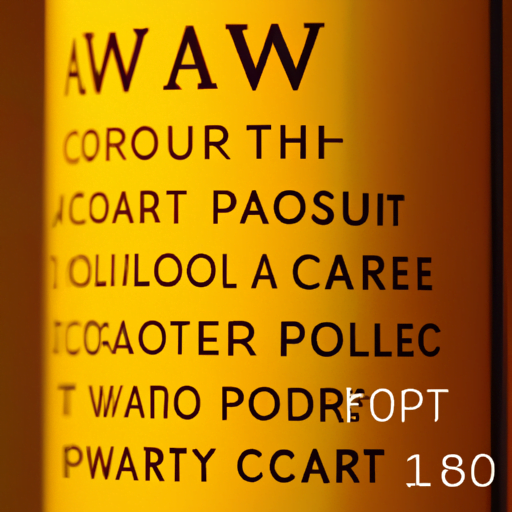
-
Table of Contents
The Role of Typography in Interior Design Signage

Typography plays a crucial role in interior design signage. It is not just about choosing a font or arranging letters; it is about creating an effective visual communication tool that enhances the overall design and user experience. In this article, we will explore the importance of typography in interior design signage and how it can impact the success of a space.
1. Typography as a Branding Element
Typography is an essential component of branding. It helps establish a visual identity and creates a consistent look and feel across different touchpoints. In interior design signage, typography can be used to reinforce a brand’s personality and values. For example, a modern and sleek font may be used in a high-end boutique to convey sophistication, while a playful and whimsical font may be used in a children’s store to create a fun and inviting atmosphere.
Case Study: Apple
Apple is known for its minimalist and clean design aesthetic, and typography plays a significant role in their branding. The use of the San Francisco font across their retail stores creates a cohesive and recognizable experience for customers. The font’s simplicity and clarity align with Apple’s brand values of simplicity and user-friendliness.
2. Legibility and Readability
One of the primary functions of interior design signage is to convey information effectively. Typography plays a crucial role in ensuring that the message is legible and readable. The choice of font, size, spacing, and contrast can significantly impact the ease with which people can read and understand the signage.
Statistics show that 95% of people consider legibility as the most important factor when reading signs. Therefore, it is essential to choose a font that is easy to read, even from a distance. Sans-serif fonts like Arial or Helvetica are commonly used in signage due to their clean and straightforward design. They are highly legible and work well in various sizes and applications.
3. Creating Hierarchy and Visual Hierarchy
In interior design signage, typography can be used to create a hierarchy of information. By varying the font size, weight, and style, designers can guide the viewer’s attention and emphasize important messages. This helps users quickly scan and understand the content.
For example, in a restaurant menu, the use of a larger and bolder font for the dish names can make them stand out and attract attention. On the other hand, the description and pricing can be displayed in a smaller and lighter font to provide supporting information without overwhelming the reader.
Visual hierarchy can also be achieved through the use of different font styles. Combining serif and sans-serif fonts can create contrast and add visual interest to the signage. However, it is important to maintain consistency and ensure that the fonts complement each other.
4. Evoking Emotions and Setting the Mood
Typography has the power to evoke emotions and set the mood in a space. Different fonts have different personalities and can convey a range of emotions. For example, a bold and uppercase font may create a sense of authority and professionalism, while a handwritten script font may evoke a feeling of warmth and personalization.
When designing interior signage, it is crucial to consider the emotions and atmosphere that the space aims to create. The typography should align with the overall design concept and enhance the desired mood. For instance, a spa may use a soft and flowing font to create a calming and relaxing ambiance, while a sports facility may opt for a bold and energetic font to convey a sense of excitement.
5. Integration with the Surrounding Environment
Interior design signage should seamlessly integrate with the surrounding environment. Typography can play a significant role in achieving this integration. By considering the architectural style, materials, and colors of the space, designers can select fonts that complement and enhance the overall aesthetic.
For example, in a rustic café with exposed brick walls and wooden furniture, a vintage-inspired font may be used to create a cohesive and nostalgic atmosphere. On the other hand, in a modern and minimalist office space, a clean and geometric font may be more appropriate to maintain a sleek and contemporary look.
Summary
Typography is a powerful tool in interior design signage. It not only serves as a branding element but also enhances legibility, creates hierarchy, evokes emotions, and integrates with the surrounding environment. By carefully selecting fonts, sizes, and styles, designers can create visually appealing and effective signage that enhances the overall user experience. Whether it is a retail store, restaurant, or office space, typography plays a crucial role in creating a cohesive and impactful design.
